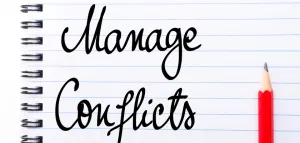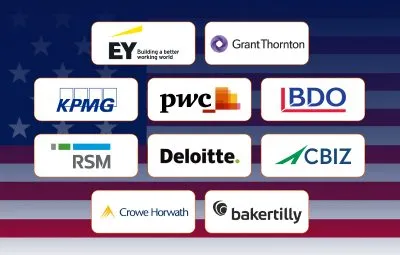Conflicts occur where there is disagreement. Additionally, from a business perspective, we can say conflict is a direct result of two businesses wanting to have different versions of success. It generally occurs due to unclear communication, quick changes, misaligned expectations, and unfamiliar processes. Furthermore, it can bring your business to the point of failure if there is no focus on the root causes of the conflicts.
Let’s first discuss the causes that will help you understand the solution better.
4 common reasons for conflicts
Ineffective communication
Either you or your clients wait for prolonged hours to accept any part of the project, then it will delay the entire process. Thus, if there is no effective communication, there will be no cooperation. Some discipline in this context will bring a positive impact on the whole process. How? Specify a date for consultant agreement, make communication regarding deadline dates, etc. This will help to outline clear rules of collaboration.
Little information provided by clients
If the information provided is not enough, it’s way too challenging to build a well-tailored system. Every little information will help to overcome a misunderstanding, and the outcome will be exactly as required. Thus, it’s worth clarifying questions and getting feedbacks while working on the client’s project.
Vague presentation
IT advisor helps to streamline areas identified by clients. Now, these areas should be well defined for better clarity. For instance, if the changes required in the project is to draw table, then the client should give clear instruction what elements will be displayed and what will be in the layout.
Different definitions of the same topic
The most problematic terms like “completed,” “urgent,” “pending completion,,” etc. can create understanding issues. All the terms that do not clearly specify the exact meanings can be frustrating. Let’s assume your client asked for a table within the system that contains a certain amount of data. Then, they try to access it by clicking on the checkbox but failed to open it. However, they had to click on ‘Edit’ for viewing. Thus, the client thinks the expectation wasn’t fulfilled, whereas you will think it was. Therefore, both sides should be clear with these terms and concepts.
For any agency, business conflict management is essential. 16% of agencies are able to control client conflicts with proper conflict management strategies. Agencies and clients have to deal with disagreement mainly when they are new to each other. Both are learning processes about each other, and the relationship is unproven. Therefore, having knowledge of conflict management will help you to build even relations with clients. So, let’s discuss the approach of conflict management.
Styles of Conflict Management
According to Thomas-Kilmann Conflict Model Instrument, there are 5 styles of handling conflict. It is generally used to plan an approach to difficult conversations or meetings. Check out:
Competing
Under this style, you don’t pay heed to the other party and aggressively focus on your goal. This generally happens when there is immediate action or conclusion to the situation needed.
Collaborating
In this mode, both of them are assertive and cooperative. You both work to find out solutions that satisfy both teams.
Compromising
The compromising approach is the most complex one. Both of the parties will not be happy with the resolution of the issue. The main motive is to find out a solution that partly satisfies both sides.
Accommodating
In an accommodating approach, you are focused on the other party’s requirement that you end up working against your own objectives.
These are the general styles to handle conflict. However, being in a business, your main focus is on all the activities that avoid hurdles to yield maximum productivity. Therefore, below we have explained workable techniques to handle client conflict.
Techniques for handling client conflict productively
Use these 8 Techniques for handling and managing conflicts with clients:
Determine if the problem is worth discussing
It’s not that you should run away from problems but, you must acknowledge- is the problem worth discussing. Many people fear conflict and try to avoid it as much as possible. Thus, considering this, identify your problem and avoid it if you think it may spur feelings of discomfort and defensiveness in the other person.
Use correct body language
The way you sit, your facial expression, and your verbal tone in the meeting with the clients speak a lot about your approach to resolve the problems, no matter what you are explaining. Thus, avoid aggressive postures and verbal tone. Sit next to your client, showing a willingness to communicate and collaborate.
Focus on facts and avoid personal views
Your direct approach to your client with personal opinions will never be helpful. Start the conversation by outlining 5W 1H facts, i.e., why, when, when, who, what, and how. And, in between, you can use phrases like “I feel,” “when I did,” etc.
Allow everyone to speak.
Clients generally complain that they weren’t heard or understood. Let the clients put forward their problems and requirement rather than you downplaying the importance of the problem. This will avoid chances of conflicts.
Have control over language
Specific words can make your clients defensive. When you disagree, you can use words like ‘and’ instead of ‘but.’ Your words can either help your clients stay or turn out into conflict and cancel the collaboration. Thus, having control over your language is necessary to have a hold on your clients.
———————————————————————————————————
Also Read: Keen On Managing Client Relationship Effectively? Follow The Best Practices
———————————————————————————————————
Refocus the client on the impact
Sometimes people can lose focus and key deadlines to submit the project to clients. These mishaps, like the manager, forgot to ask for a key piece of information end up not receiving what the client really wanted. However, you cannot just turn out your mishap into some conflict. Try to refocus the client on the project. Make an apology and ask if she can give a chance to move forward with this project. Reestablish your expertise and the commitment to achieve the client’s objectives.
Approach the problem with empathy
Only considering the problem as to how negatively it impacted your team members is a big ‘no’ to resolve the conflict. Try a move and ask why your client is upset with the relationship. Also, you can create a hypothetical situation that allows your team members to disconnect emotionally from the situation and start with a different approach. This will bring a willingness to work through the issue again.
Use client management software
Above all, the main reason for the conflict is less or no transparency between you and the client. It can be rectified by using client management software. Software like Invoicera helps to maintain a very systematic process of client management in terms of project requirements, deadlines, estimate costs, workflow insights, and a very simple interface that can be operated easily. With such software, you can effortlessly manage the clients and will have transparency between you and your client.
Final words
Whatever measures you choose, it should be for the long run. The general approach might not be easy to work upon for every person. However, if you choose an online client management process, you are likely to be away from client conflicts. It has interactive dashboards where you can manage all your clients at one station. The data like the outline of the projects, cost, and the deadlines will always keep you updated to work in a smooth manner, and if clients ask for the details, you can directly share them. Thus, the smart move will boost your business with maximum clients.















